#Villa Quijano
Text



LA VILLA QUIJANO (El Capricho de Gaudí) - ESPAÑA
45 notes
·
View notes
Text
Mejora DIF Oaxaca alimentación de quienes más lo necesitan en la Villa de Zaachila
<< Irma Bolaños Quijano, Presidenta Honoraria del organismo entrega dotaciones alimentarias a la población de los grupos prioritarios de la cabecera y las colonias Satélite y González Guardado. >>
<< En coordinación con la Administración del Patrimonio de la Beneficencia Pública de Oaxaca también entrega lentes de armazón de baja y alta graduación.>>
Continue reading Untitled

View On WordPress
0 notes
Text
Period of Japanese

https://www.flickr.com/photos/nccaofficial/17999646479
FRANCISCO ARCELLANA
(6 Setyembre 1916-1 Agosto 2002)
Isang manunulat ng maikling kuwento at sanaysay, peryodista, kritiko, at guro si Francisco Arcellana (Fran·sís·ko Ar·se·lyá·na). Zacarias Eugene Francisco Quino Arcellana ang buo niyáng pangalan. Si Arcellana, na kilala rin bilang Franz, ay isa sa mga tagapanguna sa pagsusulat ng maikling kuwento sa Ingles. Iginawad sa kaniya ang Pambansang Alagad ng Sining sa Panitikan noong 1990.
Nakilála ang kahusayan ni Arcellana sa pagsusulat noong 1932 at estudyante pa lámang sa Torres High School dahil sa pagkakalathala sa Graphic ng kaniyang kauna-unahang katha, “The Man Who Could Be Poe.”
Ang kaniyang inilathalang Expression (1934) ay pagsisimulan ng kanilang mahabàng panahon ng pagsusulatan at samahan ni Jose Garcia Villa, isa ring Pambansang Alagad ng Sining sa Panitikan sa wikang Ingles. Bahagi siyá ng Veronicans na binubuo ng 13 manunulat bago ang Ikalawang Digmaang Pandaigdig na sumasalungat sa tradisyonal na porma at paksa sa panitikang Filipino.

https://www.goodreads.com/author/show/74757.Nick_Joaqu_n
NICOMEDES MARQUEZ JOAQUIN (1917–2004) was a Filipino writer and journalist best known for his short stories and novels in the English language. He also wrote using the pen name Quijano de Manila. In 1976, Joaquin was conferred the rank and title of National Artist of the Philippines for Literature. He has been considered one of the most important Filipino writers, along with José Rizal and Claro M. Recto. Unlike Rizal and Recto, whose works were written in Spanish, Joaquin's major works were written in English despite being a native Spanish speaker.
#2 remarkable filipino writers in a different periods.
#period of japanese
1 note
·
View note
Text
2 REMARKABLE FILIPINO WRITERS IN THE DIFFERENT PERIODS
Period of Post Edsa

1.Nicomedes "Nick" Marquez Joaquin (May 4, 1917 – April 29, 2004) was a Filipino writer and journalist best known for his short stories and novels in the English language. He'd written under the name Quijano de Manila, too. Joaquin has been awarded the title and rank of a national artist in Philippine literature. Also, he was believed to be one of the great Filipino authors alongside Jose Rizal and Claro M. Recto. Compared to Rizal and Recto, who had their works written in Spanish, Joaquin's great works were made up of English even though he was from Spain.
The book "Prose and Poems" by Nick Joaquin, which was released in 1952, is believed to have the most literary prominence as determined by several English critics. The poems "Three Generations", "May Day Eve", "After the Picnic", "The Legend of the Dying Wanton", "The Legend of the Virgin Jewel;" and "It Was Later than we Thought" are included in this collection. Editors Seymour Laurence and Jose Garcia Villa considered the first of the aforementioned written works to be a "short story masterpiece" (1953). Additionally, the poem was selected as the top short story in the Philippine Press between March 1943 and November 1944.
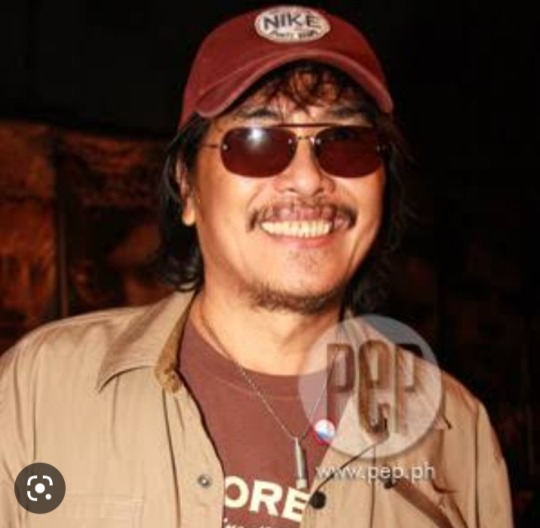
2.Carlo Magno Jose Caparas (born December 15, 1948) is a Filipino comic strip creator and writer-turned film director and producer. He is known for his creations of Filipino superheros and comic book characters such as Panday, Bakekang, Totoy Bato, Joaquin Borado, Kamagong, Kamandag, Elias Paniki, Tasya Fantasya, Gagambino, Pieta and Ang Babaeng Hinugot sa Aking Tadyang.
References:
https://www.pep.ph/news/22651/carlo-j-caparas-named-one-of-the-national-artists-this-year
1 note
·
View note
Text
1.Nick Joaquin's

May 4, 1917 – April 29, 2004) was a Filipino writer and journalist best known for his short stories and novels in the English language. He also wrote using the pen name Quijano de Manila. Joaquin was conferred the rank and title of National Artist of the Philippines for Literature. He has been considered one of the most important Filipino writers, along with José Rizal and Claro M. Recto. Unlike Rizal and Recto, whose works were written in Spanish, Joaquin's major works were written in English despite being a native Spanish speaker
Literary prominence, as measured by different English critics, is said to rest upon one of Nick Joaquin's published books entitled “Prose and Poems” which was published in 1952. Published in this book are the poems “Three Generations”, “May Day Eve”, “After the Picnic”, “The Legend of the Dying Wanton”, “The Legend of the Virgin Jewel;”, “It Was Later than we Thought”. Among these, the first of the mentioned written works were deliberated by editors Seymour Laurence and Jose Garcia Villa as a “short story masterpiece” (1953). The poem was also chosen as the best short story published in the Philippine Press between March 1943 and November 1944
2 F. Sionil Jose
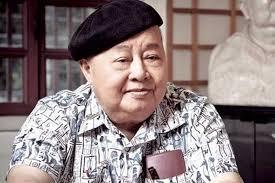
Francisco Sionil José (December 3, 1924 – January 6, 2022) was a Filipino writer who was one of the most widely read in the English language. A National Artist of the Philippines for Literature, which was bestowed upon him in 2001, José's novels and short stories depict the social underpinnings of class struggles and colonialism in Filipino society. His works—written in English—have been translated into 28 languages, including Korean, Indonesian, Czech, Russian, Latvian, Ukrainian and Dutch. He was often considered the leading Filipino candidate for the Nobel Prize in Literature.
José attended the University of Santo Tomas after World War II, but dropped out and plunged into writing and journalism in Manila. In subsequent years, he edited various literary and journalistic publications, started a publishing house, and founded the Philippine branch of PEN, an international organization for writers. José received numerous awards for his work. The Pretenders is his most popular novel, which is the story of one man's alienation from his poor background and the decadence of his wife's wealthy family.
José Rizal's life and writings profoundly influenced José's work. The five volume Rosales Saga, in particular, employs and integrates themes and characters from Rizal's work.Throughout his career, José's writings espouse social justice and change to better the lives of average Filipino families. He is one of the most critically acclaimed Filipino authors internationally, although much underrated in his own country because of his authentic Filipino English and his anti-elite views.

3.Edith Tiempo
Edith Cutaran Lopez-Tiempo (April 22, 1919 – August 21, 2011),[1]was a Filipino poet, fiction writer, teacher and literary critic in the English language.[2] She was conferred the National Artist Award for Literature in 1999.
Tiempo was born in Bayombong, Nueva Vizcaya.[2] Her poems are intricate verbal transfigurations of significant experiences as revealed, in two of her much anthologized pieces, "Halaman" and "Bonsai."[2] As fictionist, Tiempo is as morally profound. Her language has been marked as "descriptive but unburdened by scrupulous detailing." She is an influential tradition in Philippine Literature in English. Together with her late husband, writer and critic Edilberto K. Tiempo, they founded (in 1962) and directed the Silliman National Writers Workshop in Dumaguete City, which has produced some of the Philippines' best writers.
4.Bienvenido Lumbera

Bienvenido L. Lumbera (April 11, 1932 – September 28, 2021) was a Filipino poet, critic and dramatist.[1] Lumbera is known for his nationalist writing and for his leading role in the Filipinization movement in Philippine literature in the 1960s, which resulted in his being one of the many writers and academics jailed during Ferdinand Marcos' Martial Law regime.[2][3] He received the Ramon Magsaysay Award for Journalism, Literature and Creative Communications in 1993, and was proclaimed a National Artist of the Philippines for literature in 2006.[4][5] As an academic, he is recognized for his key role in elevating the field of study which would become known as Philippine Studies.
Lumbera was born in Lipa on April 11, 1932.[7] He was barely a year old when his father, Timoteo Lumbera (a baseball player), fell from a fruit tree, broke his neck, and died.[8] Carmen Lumbera, his mother, suffered from cancer and died a few years later. By the age of five he was an orphan. He and his older sister were cared for by their paternal grandmother, Eusebia Teru

Carlos Sampayan Bulosan (November 24, 1913[1] – September 11, 1956) was an English-language Filipino novelist and poet who immigrated to America on July 1, 1930.[2] He never returned to the Philippines and he spent most of his life in the United States. His best-known work today is the semi-autobiographical America Is in the Heart, but he first gained fame for his 1943 essay on The Freedom from Want.
Bulosan was born to Ilocano parents in the Philippines in Binalonan, Pangasinan. There is considerable debate around his actual birth date, as he himself used several dates. 1911 is generally considered to be the most reliable answer, based on his baptismal records, but according to the late Lorenzo Duyanen Sampayan, his childhood playmate and nephew, Carlos was born on November 2, 1913. Most of his youth was spent in the countryside as a farmer. It is during his youth that he and his family were economically impoverished by the rich and political elite, which would become one of the main themes of his writing. His home town is also the starting point of his semi-autobiographical novel, America is in the Heart.
Following the pattern of many Filipinos during the American colonial period, he left for America on July 22, 1930, at age 17, in the hope of finding salvation from the economic depression of his home. He never again saw his Philippine homeland. Upon arriving in Seattle, he was met with racism and was forced to work low paying jobs. He worked as a farmworker, harvesting grapes and asparagus, while also working other forms of hard labor in the fields of California. He also worked as a dishwasher with his brother Lorenzo in the famous Madonna Inn in San Luis Obispo which opened in 1958 or almost three years after Bulosan had died.
In 1936, Bulosan suffered from tuberculosis and was taken to the Los Angeles County hospital. There, he underwent three operations and stayed two years, mostly in the convalescent ward. During his long stay in the hospital, Bulosan spent his time constantly reading and writing.
6.Carlos P. Romulo

5.Carlos Bulosan
Carlos Peña Romulo Sr. QSC GCS CLH NA GCrM GCrGH KGCR (January 14, 1898 – December 15, 1985) was a Filipino diplomat, statesman, soldier, journalist and author. He was a reporter at the age of 16, a newspaper editor by 20, and a publisher at 32. He was a co-founder of the Boy Scouts of the Philippines, a general in the US Army and the Philippine Army, university president, and president of the United Nations General Assembly.
Carlos Romulo was born in Camiling, Tarlac and studied at the Camiling Central Elementary School during his basic education.
Romulo became a professor of English at the University of the Philippines in 1923. Simultaneously, Romulo served as the secretary to the president of the Senate of the Philippines, Manuel Quezon.
During the 1930s, Romulo became the publisher and editor of The Philippines Herald, and one of his reporters was Yay Panlilio. On October 31, 1936, the Boy Scouts of the Philippines (BSP) was given a legislative charter under Commonwealth Act No. 111.[1][2] Romulo served as one of the vice presidents of the organization.
At the start of World War II, Romulo, a major, served as an aide to General Douglas MacArthur.[3][4] He was one of the last men evacuated from the Philippines before the surrender of US Forces to the invading Japanese, as illness had prevented him from departing with MacArthur, finally leaving from Del Monte Airfield on Mindanao on April 25.[5] Active in propaganda efforts, particularly through the lecture circuit, after reaching the United States, he became a member of President Quezon's War Cabinet, being appointed Secretary of Information in 1943. He reached the rank of general by the end of the war.[3][4]
7. Virgilio S. Almario
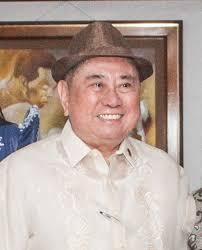
Virgilio Senadren Almario (born March 9, 1944), better known by his pen name Rio Alma, is a Filipino author, poet, critic, translator, editor, teacher, and cultural manager.[1] He is a National Artist of the Philippines. He formerly served as the chairman of the Komisyon sa Wikang Filipino (KWF), the government agency mandated to promote and standardize the use of the Filipino language. On January 5, 2017, Almario was also elected as the chairman of the National Commission for Culture and the Arts (NCCA).[2]
Growing up in Bulacan, Almario sought his education at the City of Manila and completed his degree in A.B. Political Science at the University of the Philippines Diliman.
His life as a poet started when he took master's units in education at the University of the East where he became associated with Rogelio G. Mangahas and Lamberto E. Antonio. He did not finish the program.[3]
He only took his M.A. in Filipino in 1974 at the University of the Philippines Diliman.
8.Francisco Arcellana

Francisco "Franz" Arcellana (September 6, 1916 – August 1, 2002) was a Filipino writer, poet, essayist, critic, journalist and teacher.
Francisco Arcellana was born on September 6, 1916. He already had ambitions of becoming a writer early in his childhood. His actual writing, however, started when he became a member of The Torres Torch Organization during his high school years. Arcellana continued writing in various school papers at the University of the Philippines Diliman. Later on he received a Rockefeller Grant and became a fellow in Creative Writing at the University of Iowa and at the Breadloaf Writers' Conference from 1956– 1957.[2][3]
He is considered an important progenitor of the modern Filipino short story in English. Arcellana pioneered the development of the short story as a lyrical prose-poetic form within Filipino literature. His works are now often taught in tertiary-level syllabi in the Philippines. Many of his works were translated into Tagalog, Malaysian, Russian, Italian, and German. Arcellana won 2nd place in the 1951 Don Carlos Palanca Memorial Awards for Literature, with his short story, The Flowers of May. Fourteen of his short stories were also included in Jose Garcia Villa's Honor Roll from 1928 to 1939. His major achievements included the first award in art criticism from the Art Association of the Philippines in 1954, the Patnubay ng Sining at Kalinangan award from the city government of Manila in 1981, and the Gawad Pambansang Alagad ni Balagtas for English fiction from the Unyon ng mga Manunulat sa Pilipino (UMPIL) in 1988.
The University of the Philippines conferred upon Arcellana a doctorate in humane letters, honoris causa in 1989. Francisco Arcellana was proclaimed National Artist of the Philippines in Literature on June 23, 1990 by then Philippine President Corazon C. Aquino.[4]
In 2009, or seven years after his death, his family came out with a book to pay tribute to National Artist for Literature Arcellana. The book entitled Franz is a collection of essays gathered by the Arcellana family from colleagues, friends, students and family members, including fellow National Artist Nick Joaquin, Butch Dalisay, Recah Trinidad, Jing Hidalgo, Gemino Abad, Romina Gonzalez, Edwin Cordevilla, Divina Aromin, Doreen Yu, Danton Remoto, Jose Esteban Arcellana and others.[5]
Arcellana is buried at the Libingan ng mga Bayani.
Arcellana died on August 1, 2002. As a National Artist, he received a state funeral at the Libingan ng mga Bayani.
His grandson Liam Hertzsprung performed a piano concert in 2005 dedicated to him.
9.Francisco Balagtas

Francisco Balagtas y de la Cruz (April 2, 1788 – February 20, 1862),[1] commonly known as Francisco Balagtas and also as Francisco Baltasar, was a Filipino poet and litterateur of the Tagalog language during the Spanish rule of the Philippines. He is widely considered one of the greatest Filipino literary laureates for his impact on Filipino literature. The famous epic Florante at Laura is regarded as his defining work.
Francisco Balagtas was born in Barrio Panginay, Bigaa, Bulacan as the youngest of the four children of Juan Balagtas, a blacksmith, and Juana de la Cruz. He studied in a parochial school in Bigaa and later in Manila. During his childhood years. Francisco later worked as a houseboy in Tondo, Manila
Balagtas learned to write poetry from José de la Cruz (Joseng Sisiw), one of the most famous poets of Tondo, in return for chicks. It was De la Cruz himself who personally challenged Balagtas to improve his writing. Balagtas swore he would overcome Huseng Sisiw as he would not ask for anything in return as a poet.
In 1835, Balagtas moved to Pandacan, Manila, where he met María Asunción Rivera, who would effectively serve as the muse for his future works. She is referenced in Florante at Laura as 'Selya' and 'MAR'.
Balagtas' affections for MAR were challenged by the influential Mariano Capule. The latter won the battle for MAR when he used his wealth to get Balagtas imprisoned. It was here that he wrote Florante at Laura—in fact, the events of this poem were meant to parallel his own situation.
He wrote his poems in the Tagalog language, during an age when Filipino writing was predominantly written in Spanish.
Balagtas published "Florante at Laura" upon his release in 1838. He moved to Balanga, Bataan, in 1840 where he served as the assistant to the Justice of the Peace. He was also appointed as the translator of the court. He married Juana Tiambeng on July 22, 1842, in a ceremony officiated by Fr. Cayetano Arellano, uncle of future Chief Justice to the Supreme Court of the Philippines—Chief Justice Arellano. They had eleven children but only four survived to adulthood. On November 21, 1849, Governor General Narciso Clavería y Zaldua issued a decree that every Filipino native must adopt a Spanish surname. In 1856, he was appointed as the Major Lieutenant, but soon after was convicted and sent to prison again in Bataan under the accusation that he ordered Alferez Lucas' housemaid's head to be shaved.
He sold his land and all of his riches, in order for him to be imprisoned in 1861, and continued writing poetry, along with translating Spanish documents, but he died a year later—on February 20, 1862, at the age of 73. Upon his deathbed, he asked the favor that none of his children become poets like him, who had suffered under his gift as well as under others. He even went as far as to tell them it would be better to cut their hands off than let them be writers.
Balagtas is greatly idolized in the Philippines that the term for Filipino debate in extemporaneous verse is named after him: Balagtasan.
10.Lualhati Bautista

Lualhati Torres Bautista (December 2, 1945 – February 12, 2023) was a Filipina writer, novelist, liberal activist and political critic. Her most popular novels include Dekada '70; Bata, Bata, Pa'no Ka Ginawa?; and ‘GAPÔ
Bautista was born in Tondo, Manila, Philippines on December 2, 1945, to Esteban Bautista and Gloria Torres. She graduated from Emilio Jacinto Elementary School in 1958, and from Florentino Torres High School in 1962. She was a journalism student at the Lyceum of the Philippines, but dropped out because she had always wanted to be a writer and schoolwork was taking too much time.[citation needed] Her first short story, "Katugon ng Damdamin,"[1] was published in Liwayway magazine and thus started her writing career.[2]
Despite a lack of formal training, Bautista as a writer became known for her honest realism, courageous exploration of Philippine women's issues, and compelling female protagonists who confront difficult situations at home and in the workplace with uncommon grit and strength.
Bautista garnered several Palanca Awards (1980, 1983, and 1984) for her novels ‘GAPÔ, Dekada '70 and Bata, Bata… Pa'no Ka Ginawa?, which exposed injustices and chronicled women's activism during the Marcos era.
‘GAPÔ, the Palanca Awards 1980 grand prize winner, published in 1988, is the story of a man coming to grips with life as an Amerasian. It is multilayered scrutiny of the politics behind US bases in the Philippines, seen from the point of view of ordinary citizens living in Olongapo City.
Dekada '70 is the story of a family caught in the middle of the tumultuous decade of the 1970s. It details how a middle-class family struggled and faced the changes that empowered Filipinos to rise against the Marcos government. These events happened after the bombing of Plaza Miranda, the suspension of the writ of habeas corpus, the proclamation of martial law and the random arrests of political prisoners. The oppressive nature of the Marcos regime, which made the people become more radical, and the shaping of the decade were all witnessed by the female protagonist, Amanda Bartolome, the mother of five boys.
Bata, Bata… Pa'no Ka Ginawa?, literally, "Child, Child… How Were You Made?", narrates the life of Lea, a working mother and a social activist, who has two children. In the end, all three, and especially Lea, have to confront Philippine society's view of single motherhood. The novel deals with the questions of how it is to be a mother, and how a mother executes this role through modern-day concepts of parenthood.
Bautista's 2013 book In Sisterhood received the Filipino Readers' Choice Award Nominee for Fiction in Filipino/Taglish in 2014, organized by the Filipino Book Bloggers Group.[3]
In 2015, Bautista launched the book Sixty in the City, about the life of friends Guia, Roda and Menang, who are in their mid-60s and realize that there's a good life in being just a wife, mother and homemaker.[
1 note
·
View note
Text
Filipino author and journalist Nicomedes "Nick" Marquez Joaquin (May 4, 1917 – April 29, 2004) is most known for his English-language short stories and novels. Moreover, he wrote under the pseudonym Quijano de Manila. The status and designation of National Artist of the Philippines for Literature was given to Joaquin. Along with José Rizal and Claro M. Recto, he has been regarded as one of the most significant writers in Filipino history. Despite being a natural Spanish speaker, Joaquin's most significant works were written in English as opposed to those of Rizal and Recto, whose writings were done in Spanish.
One of Nick Joaquin's published books, "Prose and Poetry," which was published in 1952, is said to be the literary work that has received the most attention, as evaluated by several English critics. The poems "Three Generations," "May Day Eve," "After the Picnic," "The Tale of the Dying Wanton," "The Legend of the Virgin Jewel," and "It Was Later than we Thought" are included in this collection. Editors Seymour Laurence and José Garcia Villa deemed the first of the aforementioned authored pieces to be a "short tale masterpiece" (1953). As the greatest short tale printed in the Filipino Press between March 1943 and November 1944, the poem was also selected.

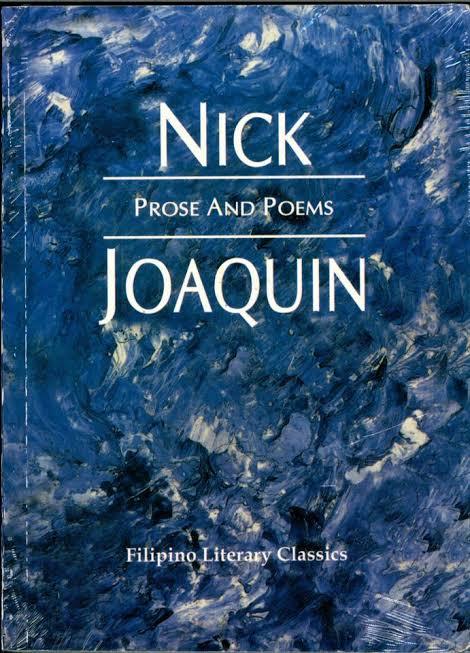
0 notes
Photo






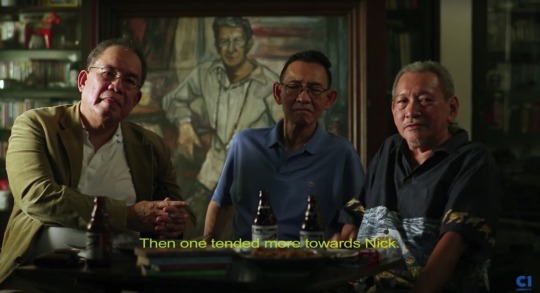
Nakakatawang isipin na sabay kong binili ang “The Woman With Two Navels” ni Nick Joaquin at ang “Jose Garcia Villa Selected Poems and New.”
Natapos ko ang kay Nick. Iniintindi ko pa rin hanggang ngayon ang kay Villa.
***
Ang mga larawan ay kuha sa pelikulang Dahling Nick na mapapanuod sa Youtube channel ng Cinema One.
#kalakian#pelikulang pilipino#cinema one#dahling nick#nick joaquin#jose garcia villa#poetery#filipino literature#filipino film#quijano de manila#pilipinas#pilipino#filipino#philippines
3 notes
·
View notes
Photo

🌎 #Turismo | #Lugares | #Viajes | #DestinosNacionales 📬 #Artesanal, #industrial, #clásico o #repostero: #destinosnacionales donde disfrutar del mejor #dulcedeleche (Booking.com) 💻 ¿Es argentino, brasilero, mexicano, chileno, uruguayo o peruano? Su origen siempre ha sido un misterio y países de toda América Latina tienen su propia historia acerca de su creación.
#11 de octubre#América Latina#Booking.com#Capo Quijano#Cordillera de Los Andes#Córdoba#dulce de leche#Fiesta del Dulce de Leche#La Feliz#OktoberFest#Paseo de los Arroyos#Tandil#Tastil#Torre del Reloj#Tren a las Nubes#Uribelarrea#valle de Calamuchita#viajeros argentinos#Villa General Belgrano
0 notes
Text

Hi, everyone I am Julie Mae Quijano, 18 years old. I lived in Garden Villas 3 City of Santa Rosa Laguna. I lived here with my father, uncle, and grandmother. I have 5 siblings, 4 girls and 1 boy they lived with my mother at Manila. My parents where separted 3 years from now because of misunderstanding. However, after what happen to them they where still talking to each other but only about the situation that we have.
My father and I where working as a team because no one else will feed us nor my uncle and my grandmother. June 10, 2018. When my father enrolled me at STI College here in Santa Rosa I choose a strand ABM because I have no choice there is no HUMMS at STI, after knowing the amount of my tuition every month, I decided to apply a job, a part time job so that I can pay my tuition in school and also I can buy the supplies that I needed in school and to myself. I pass my resume in SM Santa Rosa Mcdonalds, after that they texted me that I will taking an exam first. 1 week after that exam they texted me and said that I have passed the exam, and told me that I must prepared myself into a initial interview to there Human Resources. And when the interview day comes I actually feel nervous because this is my first time to have an interview to a higher position person. 1 month after the Human Resources interviewed me they called me and said that I passed the interview. I am so glad becuase finally I can support my studies and I am going to be part of there management, I am a newly hired service crew year 2018 month of september.
January 20, 2020. 1 year and 4 months I am stilla working student, it is hard to become a working student because you should manage your time well if not thats not good. You must give yourself enough time to do things in your school such as homeworks and projects. And dont forget to rest, enough rest from yourself. From my experience being a working student is fun because you make different memories and many memories with other people. But being with school, sitting into a chair inside the classroom, listening to a professor and writting down notes is my favorite thing to do. To study.
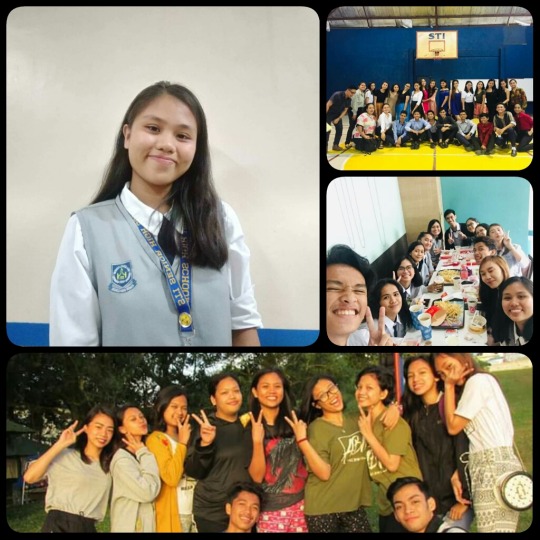
When I started going to school, first impression that my classmates given to me is that they where scared of me. I don't know why i think it is because of the tone of my voice, they said that I was so "mataray". And they said that is the reason why they don't approach me in the first they of school always. This is the reason too, why do I like in school because they where scared to me, i feel like i have a power to scared them haha.
School is my favorite place to go. I have many friends and fake friends. I loved listening to our teacher, doing activities and also having a group work. Especially, when my crush is my groupmate hehe. But seriously my favorite subject now that I am a grade 12 student is all of my subject. Contemporary arts which is more on artworks, drawings, paintings, and other things related in arts. Entrepreneur, more about on business on what strategies should use if you have a business and etc.
School life is the best of the best. Because you will learn new things, make good relationship with other people and make a memorable story. It is fun being with my friends and classmates because they are the person who let me feel that I am nkt alone in every challenges that I am facing.

Every year our school was having a sportfest which they called "Siglakas" many sports are played by the students in Senior high and college students.
In siglakas they where allowing the students to make theirselves to become a better player in such sports. Every strand has a player in every sports. I don't have a sporty talent because I get tired easily but I loved playing badminton, i just don't have a courage to play on it. So I decided to cheer my classmates who is in the game of basketball, chess, table tennis, and badminton. It is too bad because I am not able to attend the first, second, and third day of the sportfest because I have a duty on my work but atleast I reached the finals. I am so nervous because I saw the game of college in basketball it was so intense because the score were closer to the opponent.
But after sitting on that chair at the court finally our team won again. We are so glad that they did their best in the game all of the players did their part well and they are so good. And also the coaches who gives advice to their players. I am so thankful that we our the champion. Go ABM.
1 note
·
View note
Video
El Capricho de Gaudí, también conocido como Villa Quijano, fue la residencia que Máximo Díaz de Quijano, un adinerado indiano concuñado del primer marqués de Comillas, encargó al máximo representante del modernismo catalán, Antoni Gaudí. Además de esto, se considera la obra más antigua del arquitecto. Catalogado como Bien de Interés Cultural desde 1969, esta obra está considerada como una joya del modernismo europeo. Antoni Gaudí i Cornet fue un arquitecto catalán reconocido internacionalmente cuyo lenguaje arquitectónico era único, personal e incomparable. Nace el 25 de junio de 1852 en Tarragona en el seno de una familia de caldereros, aprendiendo así el uso y trabajo de un material que empleará en sus futuras obras: el hierro. Después de terminar sus estudios de arquitectura en el año 1878, conoce a Eusebi Güell quien se convertirá en su mecenas, y es en este momento en el que comienza su andadura como uno de los máximos representantes del Modernismo catalán con un estilo arquitectónico y decorativo caracterizado por la abundancia de curvas y la ornamentación inspirada en la naturaleza. La Visita VIDEO COMPLETO: https://youtu.be/VV6RnqRwj9I #gaudi #comillas #spain #a #lavisitatv #architecture #capricho #espa #gaudiarchitecture #bcn #travel #gaud #antonigaudi #oktoberfest #parkguell #europe #wanderlust #parcguell #photography #barca #wasen #casabatll #arquitectura #barcellona #tte #almh #instagood #axelguestlist #wiesn #jabiercalle (en Jabier Calle) https://www.instagram.com/p/B4401qoqVGs/?igshid=184u56iozieqz
#gaudi#comillas#spain#a#lavisitatv#architecture#capricho#espa#gaudiarchitecture#bcn#travel#gaud#antonigaudi#oktoberfest#parkguell#europe#wanderlust#parcguell#photography#barca#wasen#casabatll#arquitectura#barcellona#tte#almh#instagood#axelguestlist#wiesn#jabiercalle
2 notes
·
View notes
Text

LA VILLA QUIJANO ( El Capricho de Gaudí) - ESPAÑA
53 notes
·
View notes
Text
El Capricho - The Orientalist period of Gaudí in Comillas
El Capricho – The Orientalist period of Gaudí in Comillas
Villa Quijano is a summer country house. It was built from 1883 to 1885, around the same time as Gaudí’s Casa Vicens and the Güell pavilions in Barcelona. In all three buildings, in addition to some early elements of modernism, there are above all clear references to the Mudéjar style.
The salient feature of the villa is the cylindrical lookout tower above the entrance portal, which in turn rests…
View On WordPress
0 notes
Text
PERIOD OF PHILIPPINE
Literature in English

https://en.m.wikipedia.org/wiki/Jos%C3%A9_Garc%C3%ADa_Villa
JOSE GARCIA VILLA[1] (August 5, 1908 – February 7, 1997) was a Filipino poet, literary critic, short story writer, and painter. He was awarded the National Artist of the Philippines title for literature in 1973,[2][3] as well as the Guggenheim Fellowship in creative writing by Conrad Aiken.[4] He is known to have introduced the "reversed consonance rhyme scheme" in writing poetry, as well as the extensive use of punctuation marks—especially commas, which made him known as the Comma Poet.[5] He used the pen name Doveglion (derived from "Dove, Eagle, Lion"), based on the characters he derived from his own works. These animals were also explored by another poet, E. E. Cummings, in "Doveglion, Adventures in Value", a poem dedicated to Villa.[3]

https://en.m.wikipedia.org/wiki/Nick_Joaquin
Nicomedes "Nick" MARQUEZ JOAQUIN (Tagalog: [hwaˈkin]; May 4, 1917 – April 29, 2004) was a Filipino writer and journalist best known for his short stories and novels in the English language. He also wrote using the pen name Quijano de Manila. Joaquin was conferred the rank and title of National Artist of the Philippines for Literature. He has been considered one of the most important Filipino writers, along with José Rizal and Claro M. Recto. Unlike Rizal and Recto, whose works were written in Spanish, Joaquin's major works were written in English despite being a native Spanish speaker.
#2 remarkable filipino writers in a different periods.
#period of Philippine literature in English
0 notes
Text
Favorite Canonical Authors
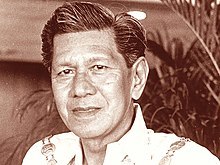
Nick Joaquin was a Filipino writer and journalist best known for his short storiesand novels in the English language. He also wrote using the pen name Quijano de Manila. Joaquín was conferred the rank and title of National Artist of the Philippines for Literature
Before becoming one of the leading practitioners of Philippine literature in English, he was a seminarian in Hong Kong – who later realized that he could better serve God and humanity by being a writer.
He bacame my favorite canonical author because his works was used to encourage people and its also an eye opener to some people, his works are mostly about the history of the Philippines
Nick Joaquin Works
one of Nick Joaquín's published books entitled “Prose and Poems” which was published in 1952.
Published in this book are the poems,"Three Generations”, “May Day Eve”, “After the Picnic”, “The Legend of the Dying Wanton”, “The Legend of the Virgin Jewel;”, “It Was Later than we Thought”.
And the most amazing is his work, its a short story editors Seymour Laurence and Jose Garcia Villa as a “short story masterpiece” (1953). The poem was also chosen as the best short story published in the Philippine Press between March 1943 and November 1944
Rewards
The literary ability of Nick Joaquín allowed him to earn multiple distinction and honors in the field of Philippine literature
On June 1, 1973, he won in the Seato Literary Award Contest for his submitted collection of short stories and poem. While on May 27, 1976, he was a recipient of one the nation's most prestigious awards which carried material emoluments besides honors and privileges. He was conferred the title of “National Artist for Literature” by the former president and Mrs. Marcos during the special rites at the Cultural Center of the Philippines in 197
#MyFavoriteCanonicalWriter
-Joy Neil Sara
1 note
·
View note

